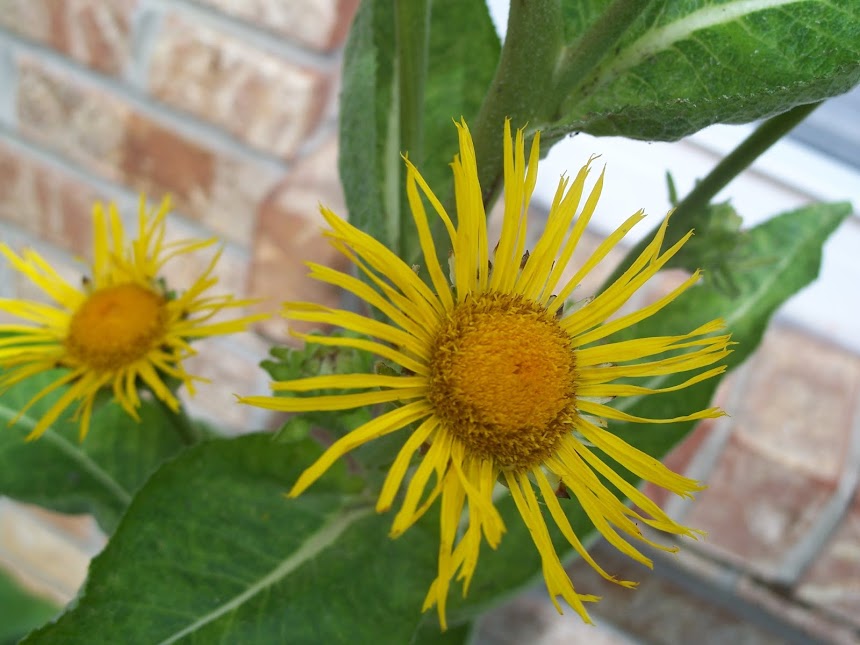Elderberry is good to have on the homestead and it is easy to grow, so it you have a spot and use elderberries or would like to, don't worry. You can do it!
In my opinion elderberries and the flowers are good to have for flu season. I try to have dried or frozen elderberries on hand at all times to make elderberry syrup with. I prefer to use frozen elderberries, it seems like the syrup made from it has more elderberry flavor. In my mind more flavor means more of the good stuff.
I have an older post on making Elderberry and Astragalus syrup here http://raf6.blogspot.com/2012/11/flu-season-and-elderberry-astragalus.html if you would like to make some for your family. Elderberries are also used to make pie, jelly, and wine.
There are many types of Elderberries, some of them are for ornamental purposes. If your goal is to produce berries you should stick with Adams, John's, Nova, or York. Even though some shrubs are self-fruitful they do produce better when planted with another variety so always plant two different kinds.
This website "Edible Landscaping by Charlie Nardozzi" has good information on elderberries and their planting and care. You can find the website here http://www.garden.org/ediblelandscaping/?page=july_elderberry. The following is taken from that site.
In my opinion elderberries and the flowers are good to have for flu season. I try to have dried or frozen elderberries on hand at all times to make elderberry syrup with. I prefer to use frozen elderberries, it seems like the syrup made from it has more elderberry flavor. In my mind more flavor means more of the good stuff.
I have an older post on making Elderberry and Astragalus syrup here http://raf6.blogspot.com/2012/11/flu-season-and-elderberry-astragalus.html if you would like to make some for your family. Elderberries are also used to make pie, jelly, and wine.
There are many types of Elderberries, some of them are for ornamental purposes. If your goal is to produce berries you should stick with Adams, John's, Nova, or York. Even though some shrubs are self-fruitful they do produce better when planted with another variety so always plant two different kinds.
This website "Edible Landscaping by Charlie Nardozzi" has good information on elderberries and their planting and care. You can find the website here http://www.garden.org/ediblelandscaping/?page=july_elderberry. The following is taken from that site.
Types of Elderberries
- 'Adams' - This American variety grows 8 to 10 feet tall. The large, juicy, dark purple fruits ripen in August and are great for making pies. The strong branches hold the berries upright. Plant a pollinator variety such as 'Johns' for maximum fruiting. This variety is often sold as 'Adams No. 1' or 'Adams No. 2'. There is little difference between these two selections.
- 'Black Beauty' - This striking European variety features purple foliage and lemon-scented pink flowers. It grows 6 to 8 feet tall and wide and can be grown in perennial borders or as a foundation plant.
- 'Black Lace' - This eye-catching European selection looks like a Japanese maple with its dark purple, deeply cut foliage. Like 'Black Beauty', this variety also grows 6 to 8 feet tall and wide, producing pink flowers and dark purple fruits.
- Johns' - This early-producing American variety produces an abundance of berries that are especially good for making jelly. Growing 12 feet tall and wide, this variety is a good pollinator for 'Adams'.
- 'Nova' - This American variety can be self-fruitful, but does best with another American elderberry growing nearby. Large, sweet fruit are produced on compact, 6-foot shrub.
- Variegated' - This European variety has attractive green and white leaves and grows 6 to 8 feet tall and wide. The plant is less vigorous and productive than other elderberry varieties, but the foliage is attractive all season long.
- 'York' - This American variety produces the largest berries of all the elderberry selections. It matures in late August and only grows 6 feet tall and wide. It pollinates 'Nova' well.
Our Adam's and York bushes will be three years old this fall and are producing more berries than our family will use this winter. I have frozen over 2 gallons of berries so far and there are more to pick. The York bush produces huge umbrells of big, juicy berries. The Adams produces smaller umbrells but is very prolific and is about 7 ft by 9 ft. (That is with me cutting it back this spring.) We let the shrub produce suckers but you can cut them back and shape the bush if you want.
If you plant bushes this fall you should be able to harvest a few come next summer. Birds like them so you will have to beat the birds to them. One more thing about Elderberries, they are kind of brittle so if you are picking berries don't try to bend a limb down to get the berries or you will end up breaking it off. We learned that the hard way. Happy planting, happy picking, happy syrup making.
If you plant bushes this fall you should be able to harvest a few come next summer. Birds like them so you will have to beat the birds to them. One more thing about Elderberries, they are kind of brittle so if you are picking berries don't try to bend a limb down to get the berries or you will end up breaking it off. We learned that the hard way. Happy planting, happy picking, happy syrup making.











No comments:
Post a Comment